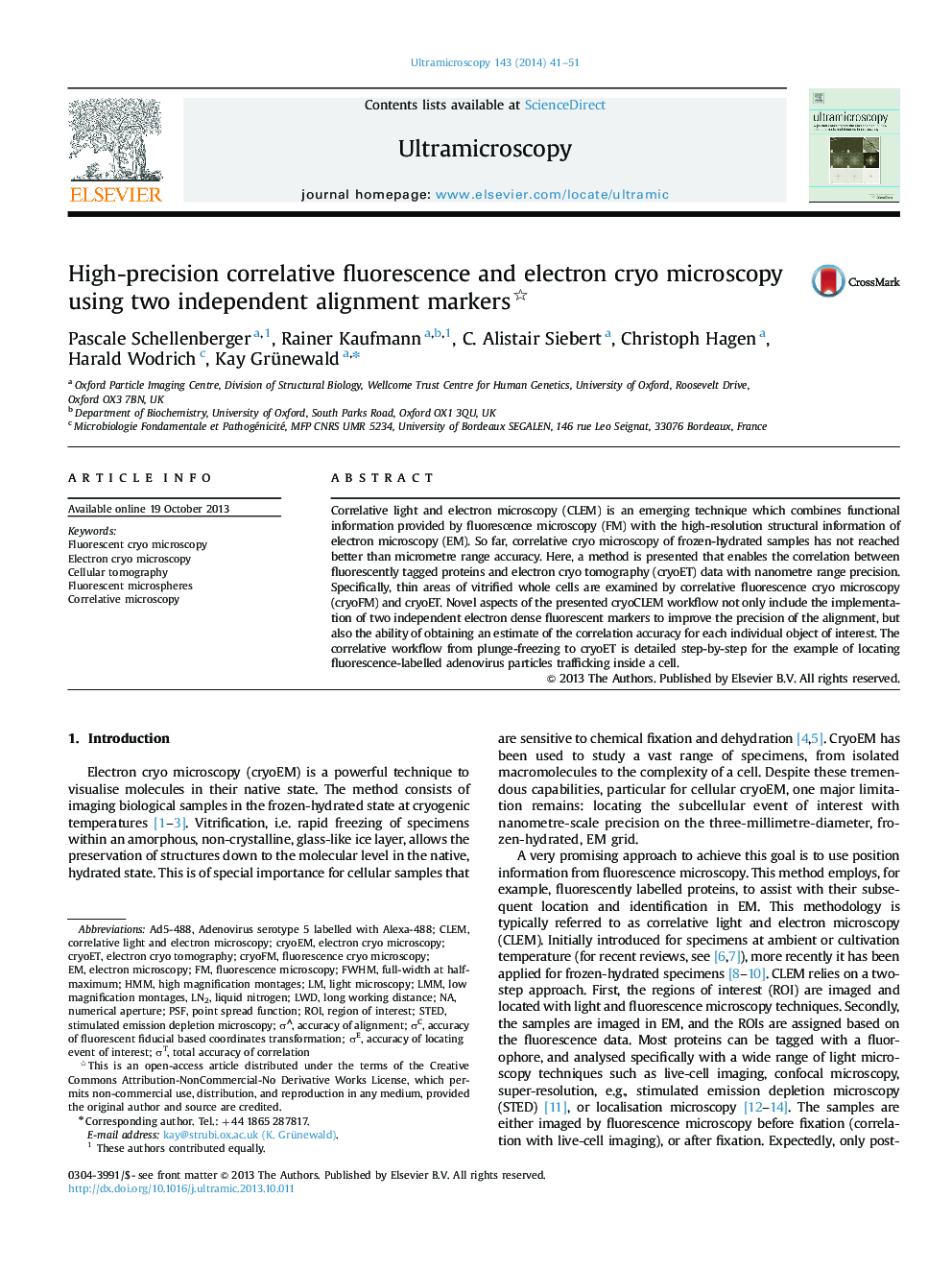| Article ID | Journal | Published Year | Pages | File Type |
|---|---|---|---|---|
| 8038335 | Ultramicroscopy | 2014 | 11 Pages |
Abstract
Correlative light and electron microscopy (CLEM) is an emerging technique which combines functional information provided by fluorescence microscopy (FM) with the high-resolution structural information of electron microscopy (EM). So far, correlative cryo microscopy of frozen-hydrated samples has not reached better than micrometre range accuracy. Here, a method is presented that enables the correlation between fluorescently tagged proteins and electron cryo tomography (cryoET) data with nanometre range precision. Specifically, thin areas of vitrified whole cells are examined by correlative fluorescence cryo microscopy (cryoFM) and cryoET. Novel aspects of the presented cryoCLEM workflow not only include the implementation of two independent electron dense fluorescent markers to improve the precision of the alignment, but also the ability of obtaining an estimate of the correlation accuracy for each individual object of interest. The correlative workflow from plunge-freezing to cryoET is detailed step-by-step for the example of locating fluorescence-labelled adenovirus particles trafficking inside a cell.
Keywords
HMMσeσaCryoETCLEMcryoEMLMMFWHMLWDROIpsfPoint spread functionnumerical aperturefull-width at half-maximumSTEDregion of interestFluorescent microspheresElectron microscopystimulated emission depletion microscopyFluorescence microscopylight microscopyCorrelative microscopycorrelative light and electron microscopy
Related Topics
Physical Sciences and Engineering
Materials Science
Nanotechnology
Authors
Pascale Schellenberger, Rainer Kaufmann, C. Alistair Siebert, Christoph Hagen, Harald Wodrich, Kay Grünewald,
